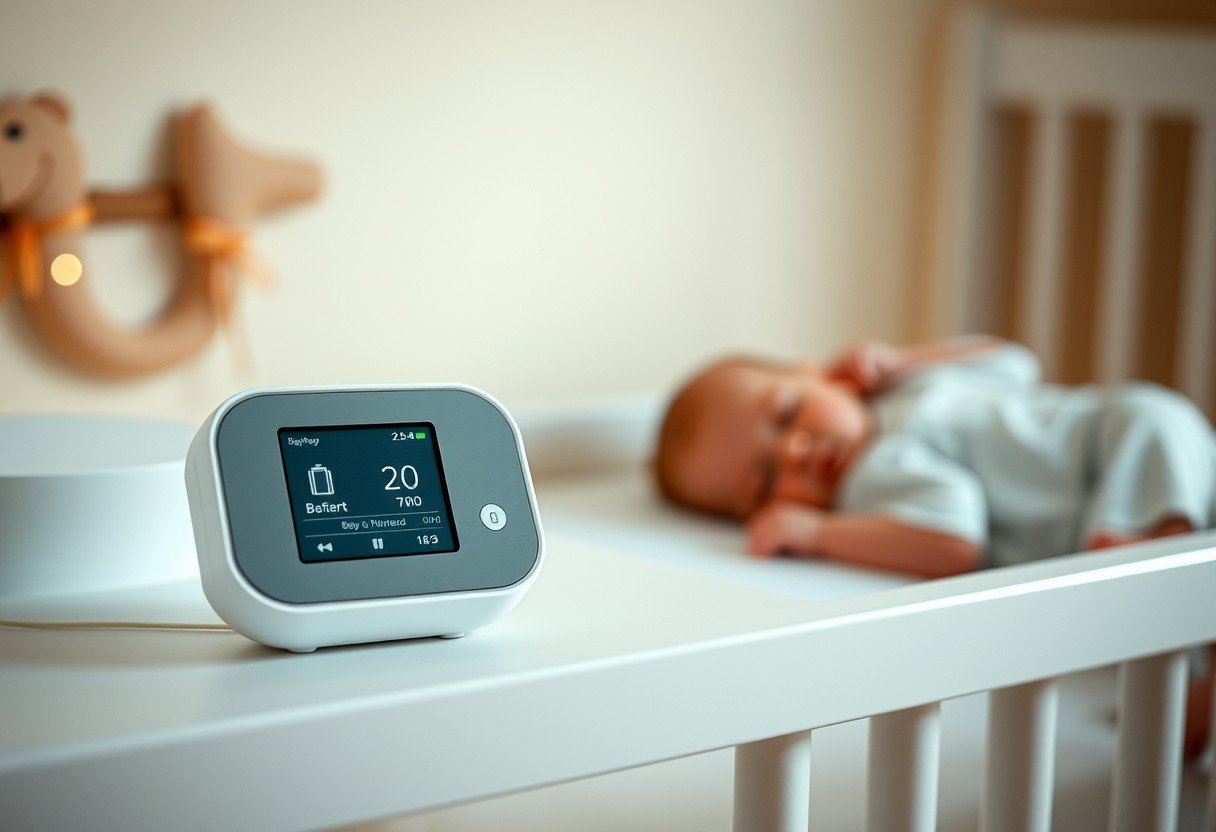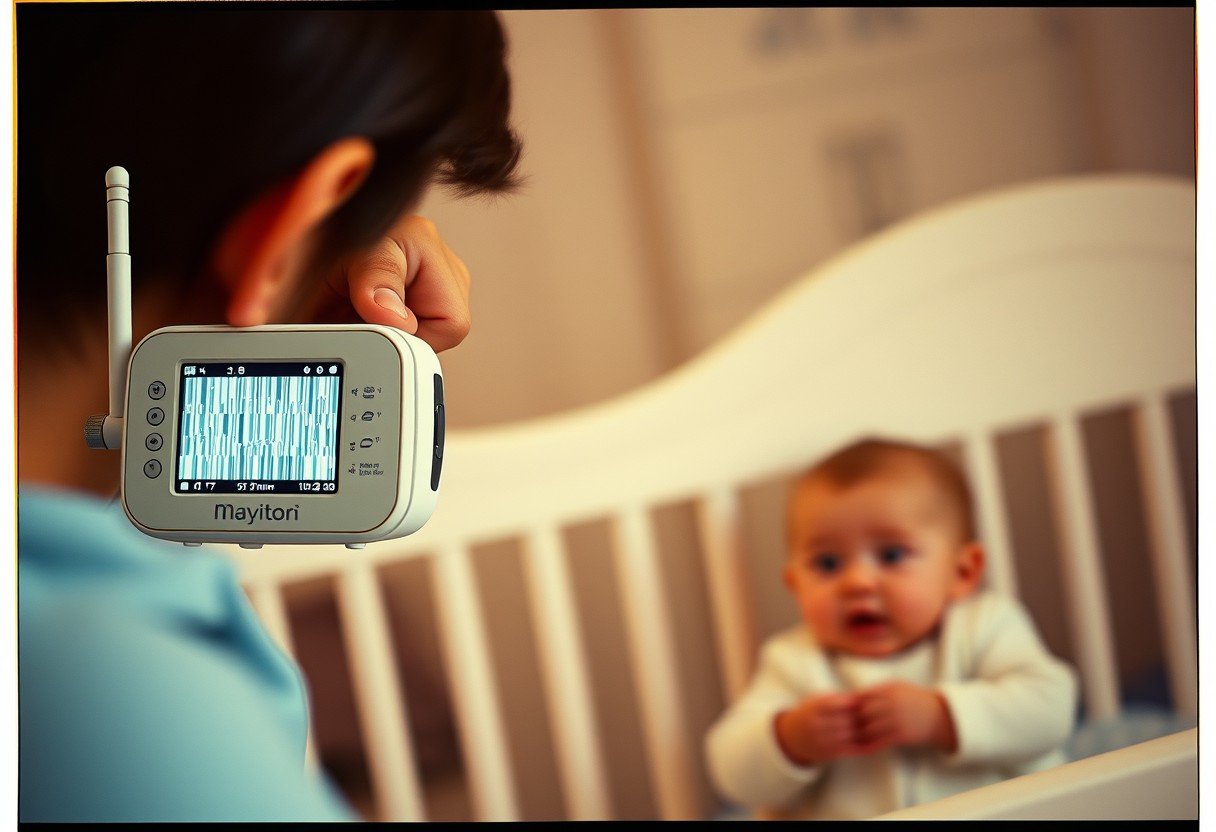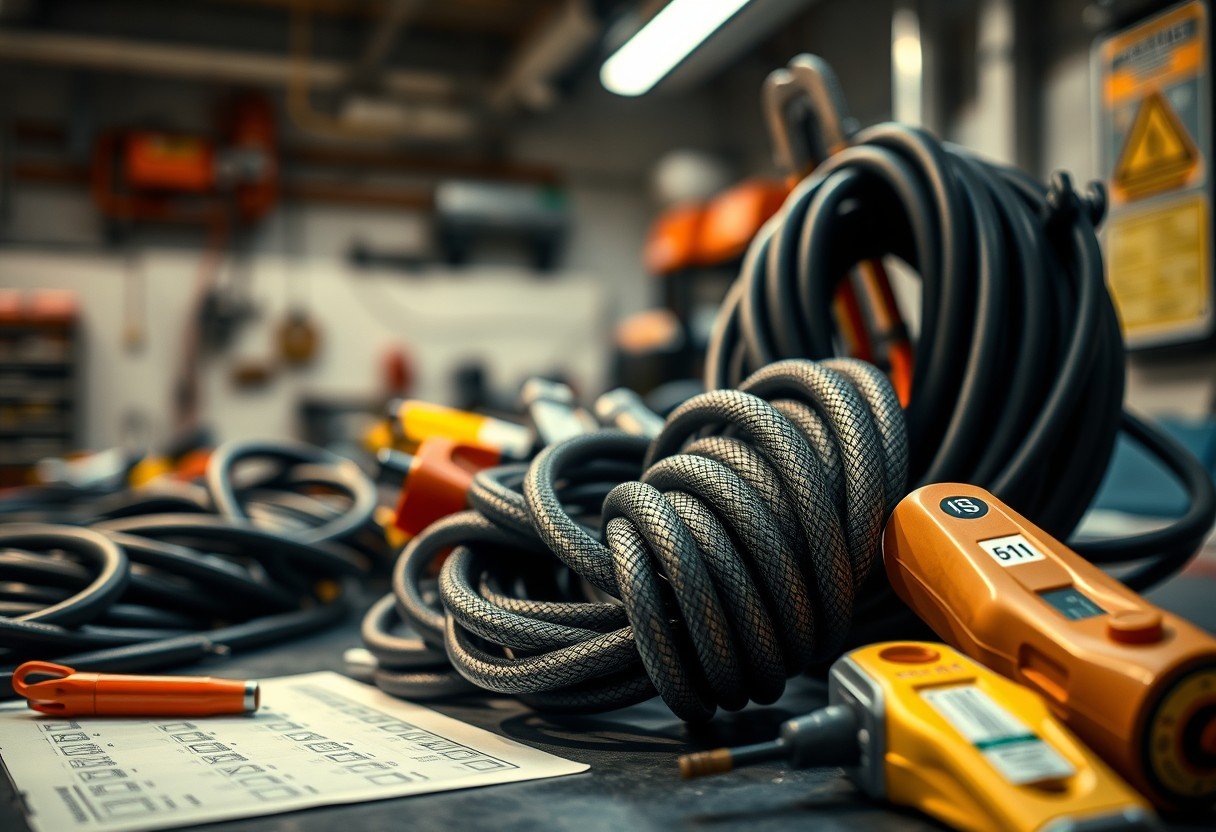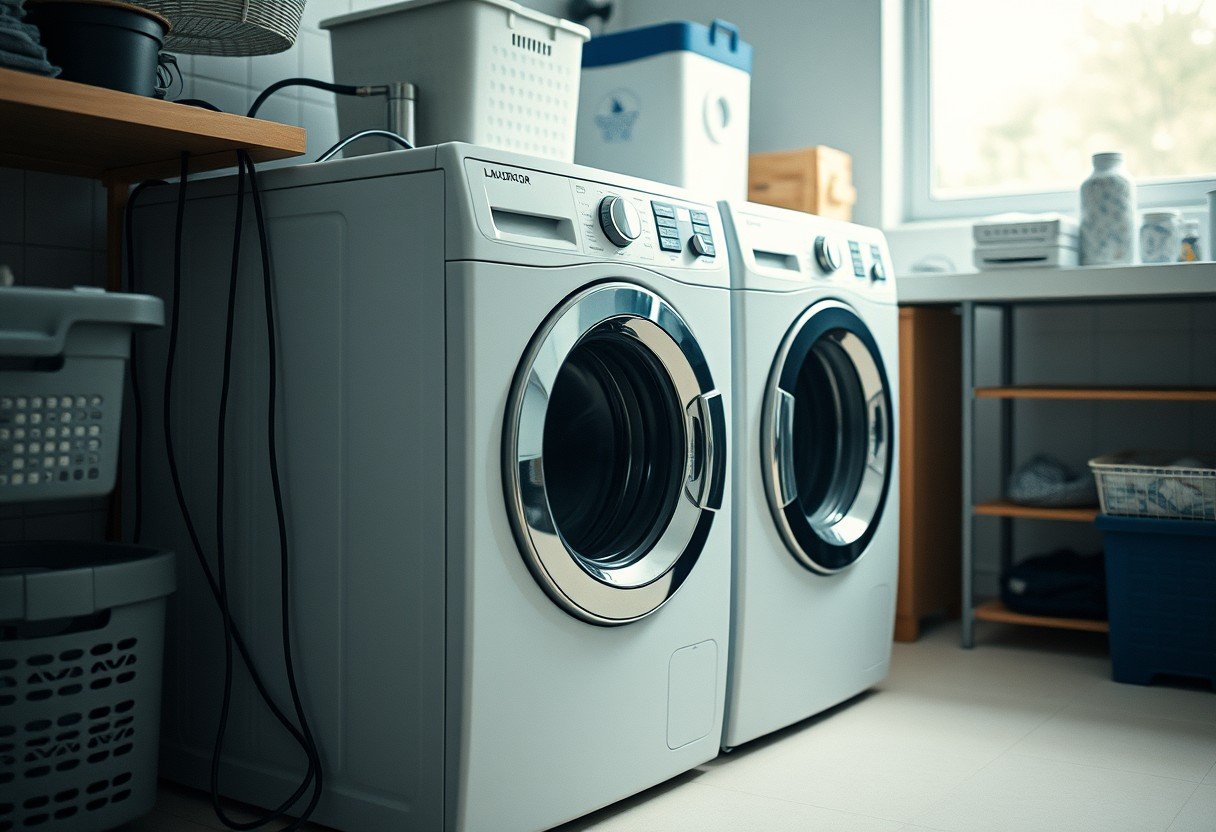Parents use Babysense baby monitors at home, on trips, and overnight, so knowing how the battery works matters. What affects battery life, where power is used, how to extend it, when to charge, who should replace the battery, and why batteries age are covered here with clear steps. The aim is simple: keep your monitor ready when you need it most.
Understanding Babysense Battery Life
Video monitors use a screen, camera link, sound processing, and a radio link, so battery life changes with how you use them. Audio only use draws far less power than video use. Range and signal quality also change power draw.
The short answer: most Babysense video monitors last about 6 to 12 hours per charge, while audio only can stretch well past a day in light use.
Capacity matters too. A common 2500 mAh cell at 3.7 volts stores about 9.25 watt hours. If your monitor uses about 1 watt on audio only, that can last many hours; if it uses 2 to 3 watts with screen and night vision, runtime drops.
Your results depend on habits, room layout, and interference from Wi Fi or thick walls. Plan charging around your routine so the parent unit starts nights near full.
What Affects Battery Drain During Daily Use
Screen brightness is one of the biggest drains. High volume and frequent alerts add steady load. Long range or weak signal forces the radio to work harder.
Night vision LEDs on the camera raise power use, and a bright display on the parent unit shortens runtime fast.
- High brightness and always on video use more power than audio only or VOX mode.
- Long distance, concrete walls, and Wi Fi noise increase radio power draw.
- Frequent talk back and constant sound alerts add extra drain over time.
Temperature plays a role. Very cold rooms lower available capacity, and very hot areas speed up battery wear. Keep the parent unit in a normal room temperature for best life.
Battery age matters. After a few hundred full cycles, lithium batteries hold less charge. You can slow this by avoiding full empty to full charge swings every day.
Typical Lifespan And Real World Expectations
In everyday family use, many parents report a school night of video monitoring on one charge, then a top up the next day. With audio only or screen off most of the time, the parent unit can last through a weekend day.
Expect about 6 to 12 hours with mixed video use, 10 to 20 hours with audio heavy use, and shorter runtimes if you keep the screen on at max brightness.
Over the long term, lithium batteries usually keep strong performance for 2 to 3 years of normal use. Heavy daily discharge and high heat can shorten that to closer to 18 months. Light use and gentle charging can extend it past 3 years.
Plan for some drop each year. A common pattern is 10 to 20 percent loss in year one, a bit more in year two. If your nightly runtime is no longer reliable, it is time to replace the battery or use the unit plugged in at night.
Choose The Right Power Setup For Your Monitor
Most Babysense parent units use a built in rechargeable lithium cell. Some audio models may use AA batteries, which can be rechargeable NiMH or disposable alkaline. Each setup has trade offs in runtime, cost, and convenience.
Pick the power option that matches your routine, not just the largest number on a box.
| Battery Type | Typical Use In Monitors | Pros | Things To Note |
|---|---|---|---|
| Lithium Ion Pack | Most video parent units | High energy, light, fast charging | Ages with heat, prefers partial charges |
| NiMH AA Cells | Some audio units | Rechargeable, easy to swap | Lower voltage, needs quality charger |
| Alkaline AA | Backup for audio units | Easy to find, no charger needed | Single use, higher long term cost |
If your parent unit supports USB power, a small power bank can cover long trips or power cuts. Keep cables short and in good shape to reduce charging loss and avoid slow charge issues.
Settings And Habits To Extend Battery Life
Small changes add up. A few smart settings can double runtime without hurting peace of mind. Test one change at a time so you see what helps most in your home.
- Lower screen brightness to the lowest comfortable level.
- Use VOX or screen off so video wakes only on sound.
- Set audio sensitivity to filter minor background noise.
- Reduce volume to a clear but not loud level.
- Keep the parent unit closer to the camera to improve signal.
Use audio only during naps and switch to video when you need a quick look.
At night, place the charger by your bed so topping up becomes a routine. Short daily top ups are easier on lithium than full empty to full charge cycles.
Maintenance And Charging Best Practices
Clean the charging port and plug every few weeks with a soft brush or air. Dust and lint raise resistance and slow charging. Check for kinks or cuts in the cable.
Keep the parent unit in a cool, dry spot while charging and avoid covering it with bedding.
Try to keep charge level between 20 and 80 percent during daytime use. Full charges are fine before long nights, but avoid storing the unit fully empty or fully full for weeks.
If your model has firmware updates, apply them. Power fixes often come with updates that improve sleep behavior, VOX triggers, and radio efficiency.
Troubleshoot Fast Drain And Charging Problems
If the battery suddenly drops fast, reboot the parent unit and close any extra features like constant talk back. Move closer to the camera to test if weak signal is the cause.
Rule out the charger by trying a known good cable and wall adapter with the same voltage and current rating.
Watch charge time. If the unit never reaches full, the port or cable may be worn. If it reaches full but dies in an hour, the battery may be at end of life.
Extreme cold or hot rooms can mimic battery failure. Test indoors at normal room temperature before you decide to replace the pack.
Frequently Asked Questions
How long does a Babysense baby monitor battery last per charge?
With mixed video and audio use, many parent units last 6 to 12 hours per charge. With audio only and VOX, runtime can extend to 10 to 20 hours depending on signal and volume.
What is the best way to extend Babysense monitor battery life?
Lower screen brightness, use VOX so the screen sleeps, reduce volume, and keep the parent unit closer to the camera. These steps cut power draw without losing key alerts.
Is it safe to keep the Babysense parent unit plugged in at night?
Yes, it is safe to use the parent unit while plugged in with the correct charger. Place it on a hard surface and check that it does not get hot to the touch.
How many years does a Babysense battery usually last?
Most lithium packs keep good performance for 2 to 3 years of daily use. Heavy heat and deep cycles shorten life, while gentle charging habits extend it.
When should I replace the Babysense battery?
Replace it if runtime falls below your normal night, if charge drops suddenly, or if swelling or leaks appear. Always use a compatible battery or contact support for service.
Do firmware updates help battery performance on Babysense monitors?
Yes, updates can improve sleep modes, VOX triggers, and radio use, which reduce drain. Check the support page for your model and follow the update steps.








Leave a Comment